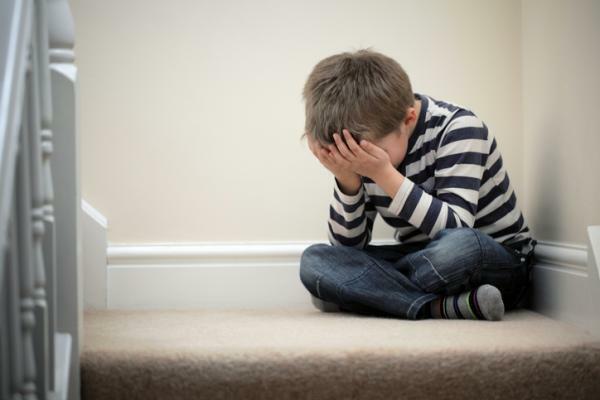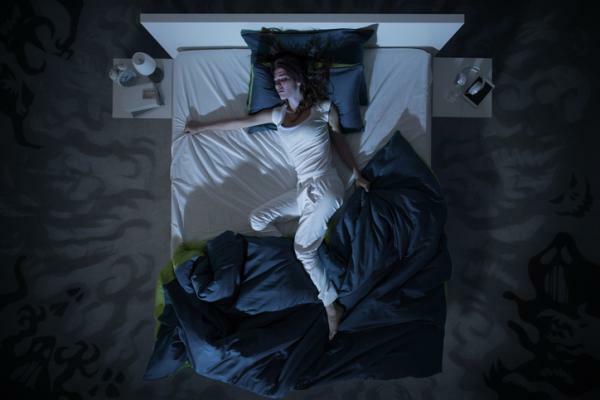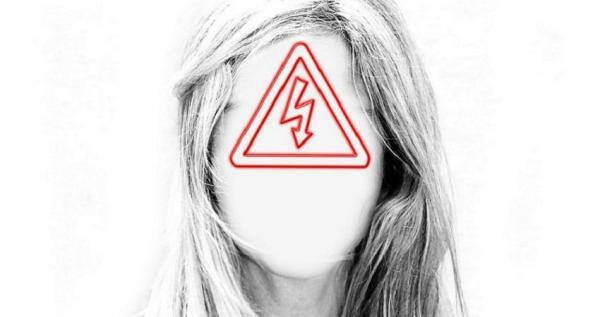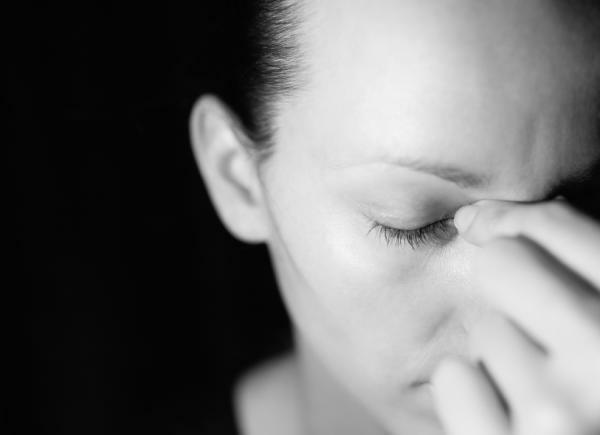
Do you know Pinoccio Syndrome? This is characterized by the appearance of symptoms such as emotional coldness, gestural petrification of the face, as well as "clumsy" movements with the body. Pinoccio Syndrome, whose name is based on the story of a wooden boy who came to life, can also appear as a result of gelotophobia.
In this article, you will learn about other curious peculiarities of gelotophobia, or more commonly known as the pathological fear of ridicule or laughter from others. Do you want to know what it is gelotophobia: meaning, symptoms, causes and treatment? Well, we explain all this in this Psychology-Online post, keep reading!
Index
- What is gelotophobia
- Symptoms of gelotophobia
- Causes of gelotophobia
- Treatment of gelotophobia
- Differential diagnosis of gelotophobia
What is gelotophobia.
The word gelotophobia comes from the Greek term gels, which means laughter, and together with the term phobos, indicates a pathological fear of laughter

Symptoms of gelotophobia.
If you ask yourself "How do I know if I have gelotophobia?", pay attention to the following symptoms more characteristics of the fear of ridicule, which are linked to the symptomatology of phobias of overall level:
- Negative references to all situations that cause shame in the subject
- excessive avoidance and escape from these stimuli.
- Hyperventilation and palpitations.
- intense anxiety in the face of erroneous estimates of threat, that is, in the face of the meanings attributed to the stimulus and the evoked response of fear.
- Appearance of other disorders derived from this phobia.
Other more typical and distinctive symptoms of gelotophobia or fear of ridicule could be:
- Conviction of being wrong or that there is something wrong with him/her and that makes him/her appear to others as someone ridiculous.
- Conviction of being strange or weird to others.
- Expectation of being laughed at by others.
- Perception of own defects (whether real or not).
- feeling of inferiority: low self-esteem and low social skills.
- Social withdrawal to avoid making a fool of yourself.
- Appearance of coldness or lack of humor.
- Psychosomatic alterations such as flushing, tension headaches, tremors, dizziness and sleep disturbances.
- Pinocchio syndrome: rigidity, clumsiness...
- Lack of spontaneous vitality, joy.
Causes of gelotophobia.
The cause is not only a stressor or an experience, or the biological predisposition of the individual, but we will always keep in mind the interaction between genetics and environment:
- The subject suffering from gelatophobia surely has a biological vulnerability which, together with the stress experienced, will create a feeling of false alarm, which will end up becoming a learned alarm, generating a psychological vulnerability.
- This vulnerability is influenced by past learnings, either directly or vicariously from other real alarms. This cycle gives rise to the appearance of anxiety disorders and phobias.
- As a specific cause, repeated traumatic experiences ridiculed (or been ridiculed), during childhood and/or adolescence. In this sense, the embarrassing opinion of being ridiculous or feeling ridiculous, which can be used (or not) during the process of identity formation of the child/young person, thus producing a defensive lifestyle that tends to avoid ridiculous.

Treatment of gelotophobia.
How to overcome gelotophobia? The key to curing the fear of other people's laughter is repeated exposure to the particular feared stimulus, and generation of new learning in which the feared stimulus becomes innocuous. Next, I explain what are the most effective treatments to cure gelotophobia:
Cognitive behavioral therapies
Finally, other techniques are also known that work with some phobias such as narrative therapy and processing and eye movement desensitization (EMDR). All these therapies mentioned are included in the cognitive behavioral current of psychology, of which we have more scientific evidence of its effectiveness.
Check out our posts about EMDR therapy: what it is, what it consists of and what its techniques are like and Narrative therapy: what it is and what techniques it uses if you want to know more about these types of cognitive behavioral therapies.
If you think that you could suffer from gelotophobia and you notice that this is interfering with your daily life and causing you discomfort, It is important that you go to a psychologist who can do the relevant tests and carry out the treatment that best suits your case in order to overcome gelotophobia.
exposure therapy
To begin the treatment of gelotophobia, it is important to acquire anxiety control skills and relaxation, as well as creating a safe environment within the framework of an appropriate therapeutic alliance to be able to continue going forward.
From here, as with all phobias, the best treatment would be exposure therapy or systematic desensitization. It is the most current and used, its effectiveness in curing gelotophobia lies in preventing avoidance from becoming a sign of safety. This therapy can be carried out many ways:
- Live (gradual or inversive): exposing oneself directly to the situation that generates irrational fear and provokes shame
- symbolic: through associated visual or auditory stimuli or through virtual reality.
- In a group: thus increasing social support and motivation and adherence to therapy.
- interoceptive: provoking the bodily sensations typical of the moment the fear appears, such as hyperventilation.
If you are interested in this type of gelotophobia treatment, we recommend you expand your knowledge with our post Exposure technique in psychology: what it is and characteristics.
Differential diagnosis of gelotophobia.
To make a good diagnosis, it is important that we differentiate the specific phobia, in this case gelotophobia, from other anxiety disorders and other phobias such as:
- Agoraphobia: the difference is that the symptoms of agoraphobia occur in several disparate situations in which the subject is in closed places; or that the situations are feared or avoided due to thoughts about developing seizure-like symptoms panic or other disabling or humiliating symptoms in situations where escape would be difficult or where no available help.
- social anxiety disorder: to distinguish it, it is important to note that they are afraid of making a fool of themselves because of things that they think embarrass them, not because of the fear of a global negative social evaluation.
- anxiety disorder due toseparation: In this case, the feared situation is due to the separation from the caregiver or attachment figure.
- panic disorder: if panic attacks occur only in the presence of the feared object or situation, then it will be diagnosed specific phobia, while if it is generalized and panic attacks occur unexpectedly, it is will diagnose panic disorder.
- Obsessive-compulsive disorder: to differentiate the diagnosis, we must know if the cause, the origin of the specific fear is a consequence of obsessive ideas.
- Trauma and stress-related disorders: if the phobia develops after a traumatic event, as a result of bullying, for example. It will also be necessary to know if the criteria for PTSD.
- Schizophrenia spectrum disorders and other psychotic disorders: When the fear and avoidance are due to delusions, the specific phobia will not be diagnosed.
If you liked this article about gelotophobia, the fear of ridicule, we recommend you read our post about How to overcome the sense of ridicule.
This article is merely informative, in Psychology-Online we do not have the power to make a diagnosis or recommend a treatment. We invite you to go to a psychologist to treat your particular case.
If you want to read more articles similar to Gelotophobia (Fear of Teasing): Meaning, Symptoms, Causes and Treatment, we recommend that you enter our category of Clinical psychology.
Bibliography
- American psychiatric association, (2014). Diagnostic and Statistical Manual of Mental Disorders DSM – 5. Madrid Spain. Pan American Medical Publishing.
- Belloch, A., Sandin, B., Ramos, F., (2009). Manual of psychopathology, volume II. Madrid. McGraw Hill / Interamericana de España, S.A.U.
- Labrador, f. J., (ed.) (2008). Behavior modification techniques. Madrid. Pyramid
- Moreno, A. S., & Martinez, O. L. (2010). Gelotofobia: evaluation of the fear of ridicule in university students. International Journal of Developmental and Educational Psychology, 1(1), 289-298.
- Torres-Marín, J., and Carretero-Dios, H. (2017). Gelotofobia: The dark side of the sense of humor. Cognitive Science, 11(1), 14-16.
Gelotophobia (Fear of Teasing): Meaning, Symptoms, Causes and Treatment


